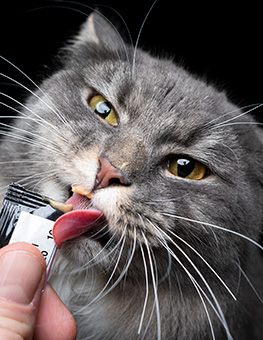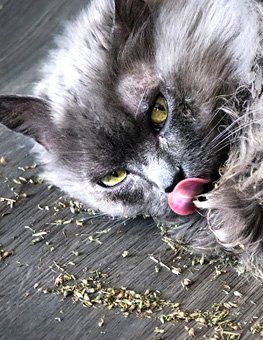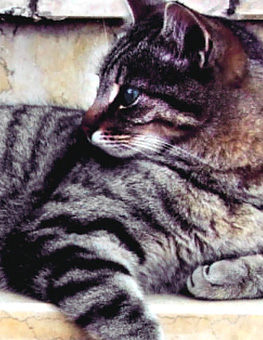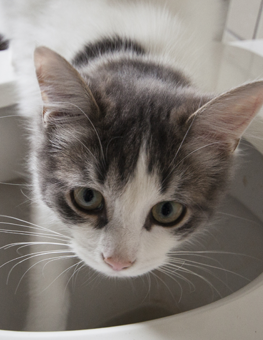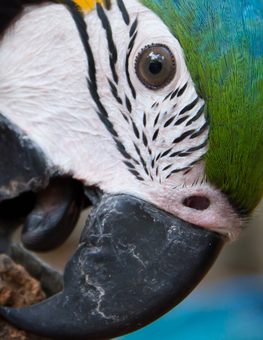Cat Parasites and Intestinal Health
As a cat owner, it’s important to know about the different types of worms and their potential effects on your cat’s health. Humans can become infected too, so keeping your cat parasite-free is truly important.
Roundworms
Roundworms are usually 2 - 4 inches long, tan or white “spaghetti-like” creatures with tapered ends. They are the most common type of worm to infect pets, and can cause vomiting, diarrhea, and a generally unhealthy appearance. Cats with heavy infestations might vomit or pass whole worms in their stools. Worms can even cause intestinal blockages.
Roundworm facts:
- Kittens may become infected while in the uterus so they are already infected at birth
- Kittens may become infected through their mother’s milk
- Roundworms can measure up to 6 inches long
- Roundworm eggs can live in your yard for several years and remain infectious
Hookworms
Hookworms are blood-sucking intestinal parasites that can cause anemia and even death in kittens and adult cats. Hookworms are usually not passed in the stool and therefore they are difficult to diagnose without a fecal test from your veterinarian. The severity of hookworm effects depends on the number of worms, as well as your cat’s overall health and age.
Hookworm facts:
- Kittens may become infected through their mother’s milk
- Hookworm larvae enter the cat through the skin and move through the blood to the lungs where they are coughed up and swallowed
- Hookworms have “hooked” mouthparts, which they use to hook onto the intestine
- The female produces as many as 5,000-10,000 eggs per day
Tapeworms
Tapeworm segments are ¼ - ½ inches long, white, and are usually seen moving in the cat’s fur or stool. When dried, these segments will appear like a grain of uncooked rice or a sesame seed and are often found in the cat’s bedding. Tapeworms live in the small intestine and steal the nutrients from the food your cat eats.
Tapeworm facts:
- Cats can get tapeworms by eating an infected flea
- Some types of tapeworm can grow up to 15 feet long
- The largest tapeworm known was almost 60 feet long
- The tapeworm attaches itself to the intestinal wall with hooks and suckers
- The tapeworm’s segmented body grows continuously and the oldest segments are shed in the stool
- These segments contain many thousands of eggs
Whipworm
Like hookworms, whipworms bury their heads into your cat’s intestines and suck blood. Occasionally, severe infections can develop and lead to diarrhea, weight loss, and blood loss.
Whipworm facts:
- Whipworms can't infect cats through the skin - cats must ingest the eggs to become infected
- These worms get their name from their whip-like shapeWhipworm eggs are hardy and can survive outdoors in the soil for years
Coccidia
Coccidia are not worms but a single-cell microscopic organism. This organism can cause watery diarrhea and vomiting in young pets. In some cases, the diarrhea can be severe enough to be life threatening.



